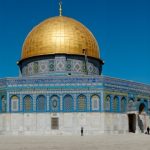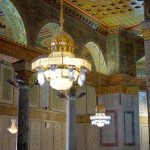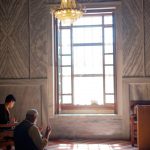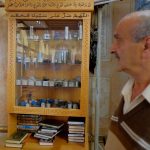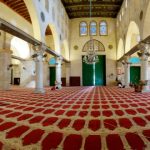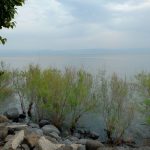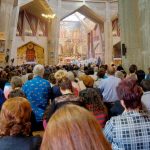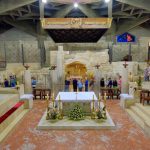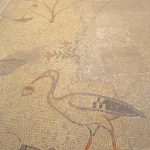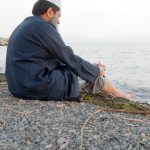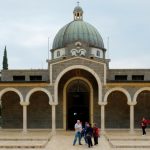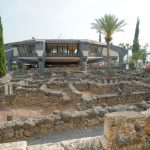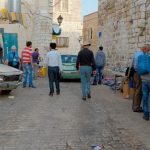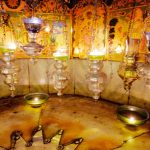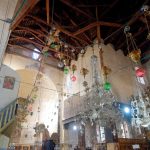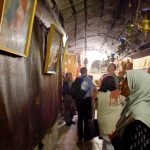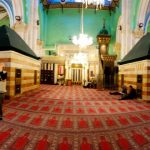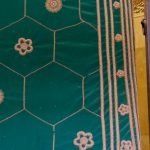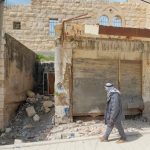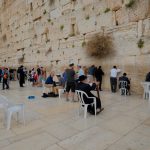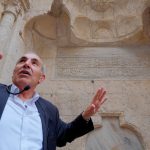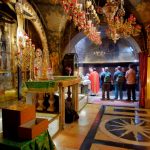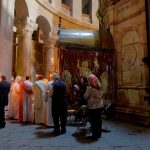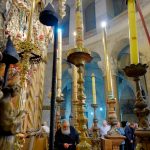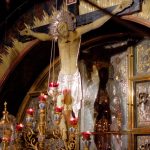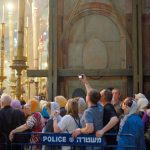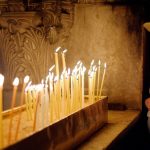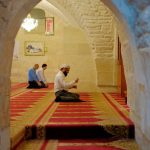The posts from 20-28 March 2014 were originally posts formatted for Tumblr. Click here to see the original blog.
Well, today our Christian and Muslim group was granted special access to the two principle buildings on Temple Mount, or Haram al-Sharif as it is called in the Islamic world. The two buildings we were secreted around were the Dome on the Rock and the al-Aqsa Mosque.
The Dome on the Rock (exterior: top; interior: left and middle of the triptych) is an extremely ornately decorated octagonal building surrounding the rock from which Muslims believe the Prophet ascended to heaven. In Jewish thought this rock is the Foundation of the World, the centre of all things and first point of creation. This was a holy place, quiet and prayerful despite extensive restoration work under way. Muslim Prayer space is generally very open – all that is needed is a carpet to kneel on and an indication of the direction of Mekkah.
The al-Aqsa Mosque is a much larger rectangular and aisled building facing the Dome on the Rock (interior: bottom). Two insults were pointed out to us by our guide one of which he is pictured standing alongside (right of the triptych). This is a cabinet of the remains of American made weapons that have been fired at worshippers on the site. I couldn’t help but catch a hint of irony in his voice as he described America as “the king of democracy”. The other “insult” was a corner of the Mosque that the Crusaders turned into a church in the twelfth century.
Our Muslim colleagues described a sense of deep sadness that this holy site has become a source of deep dispute. To them it would seem most fitting that all faiths were free to worship here. But in an Israeli State that is so fearful for its own existence and future it looks for now as if mistrust is the dominant force.


